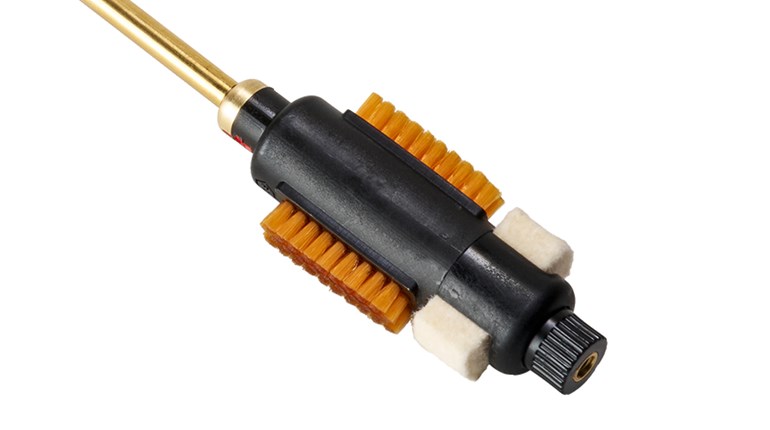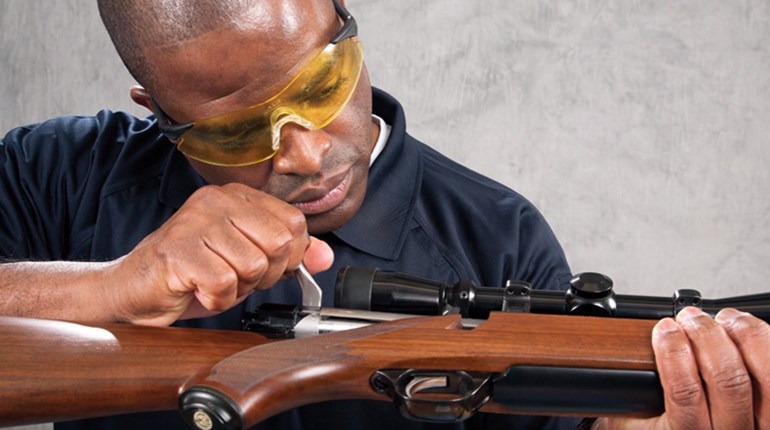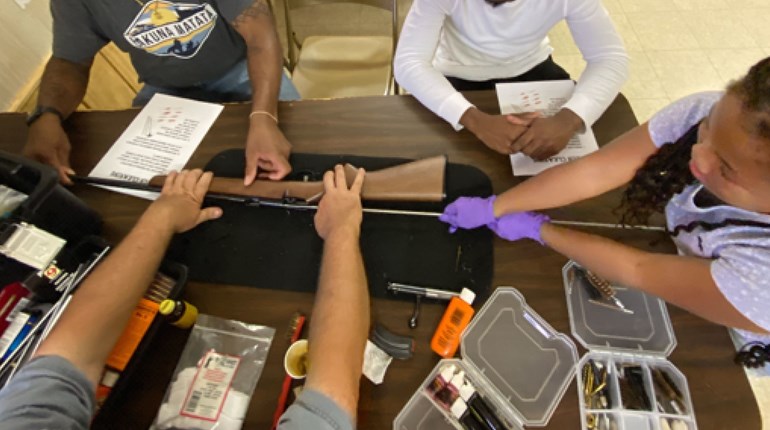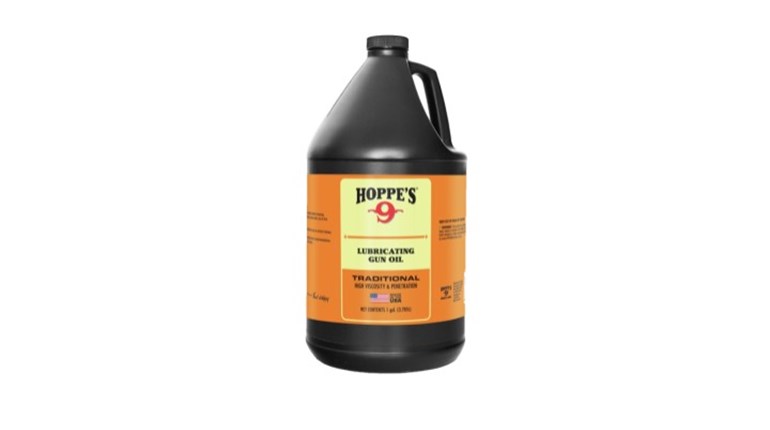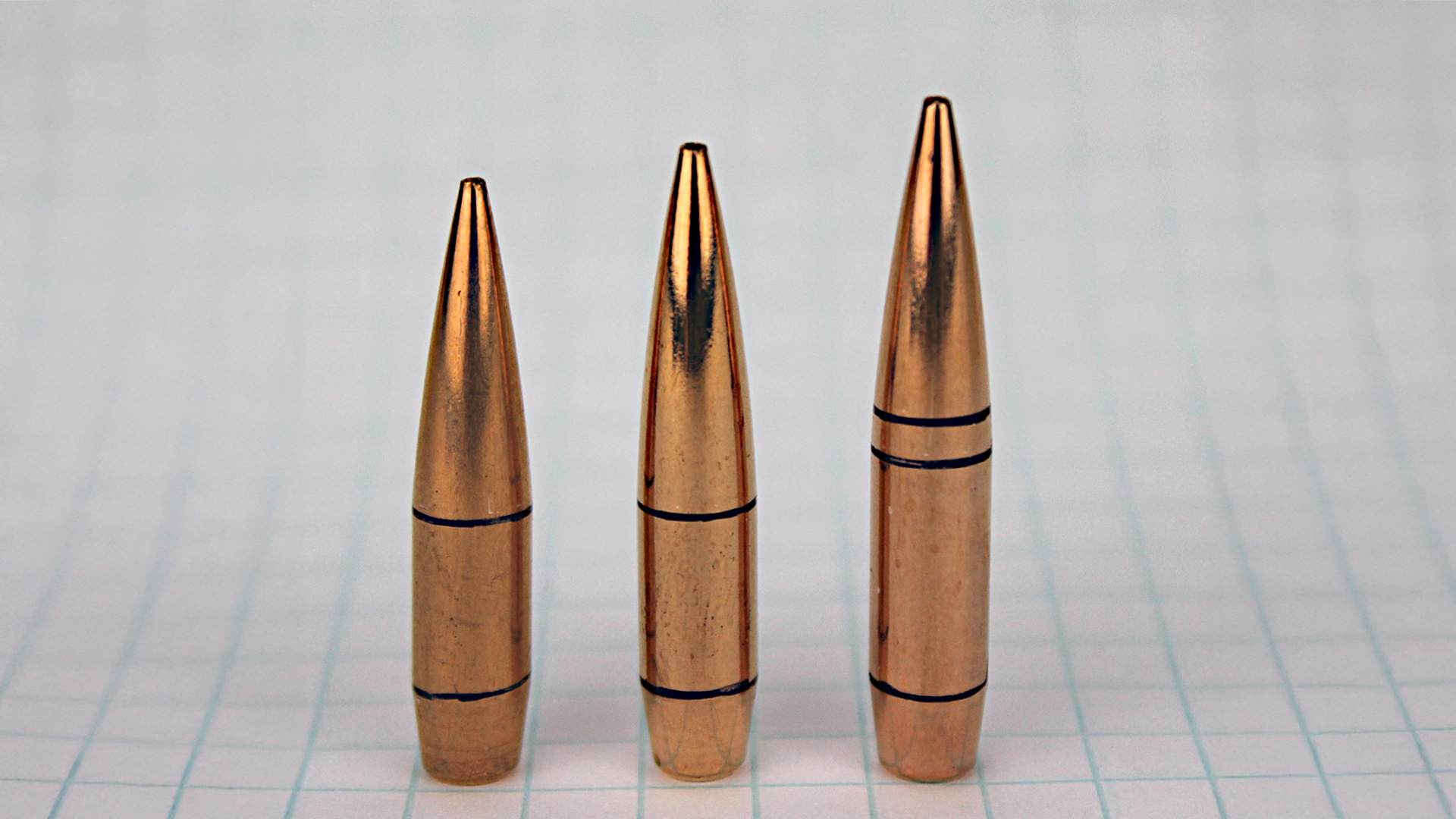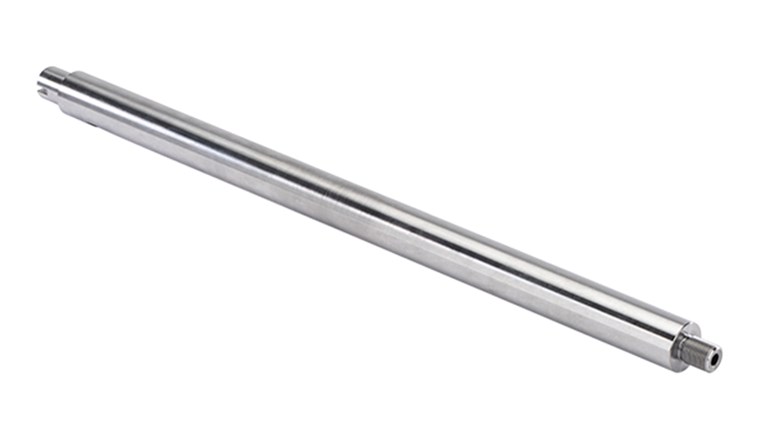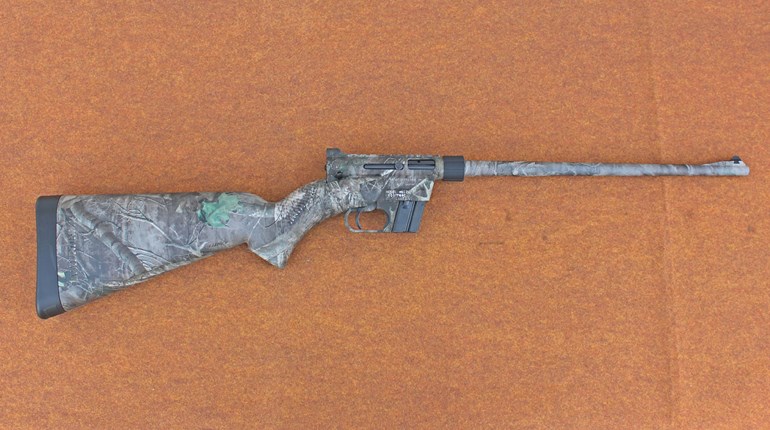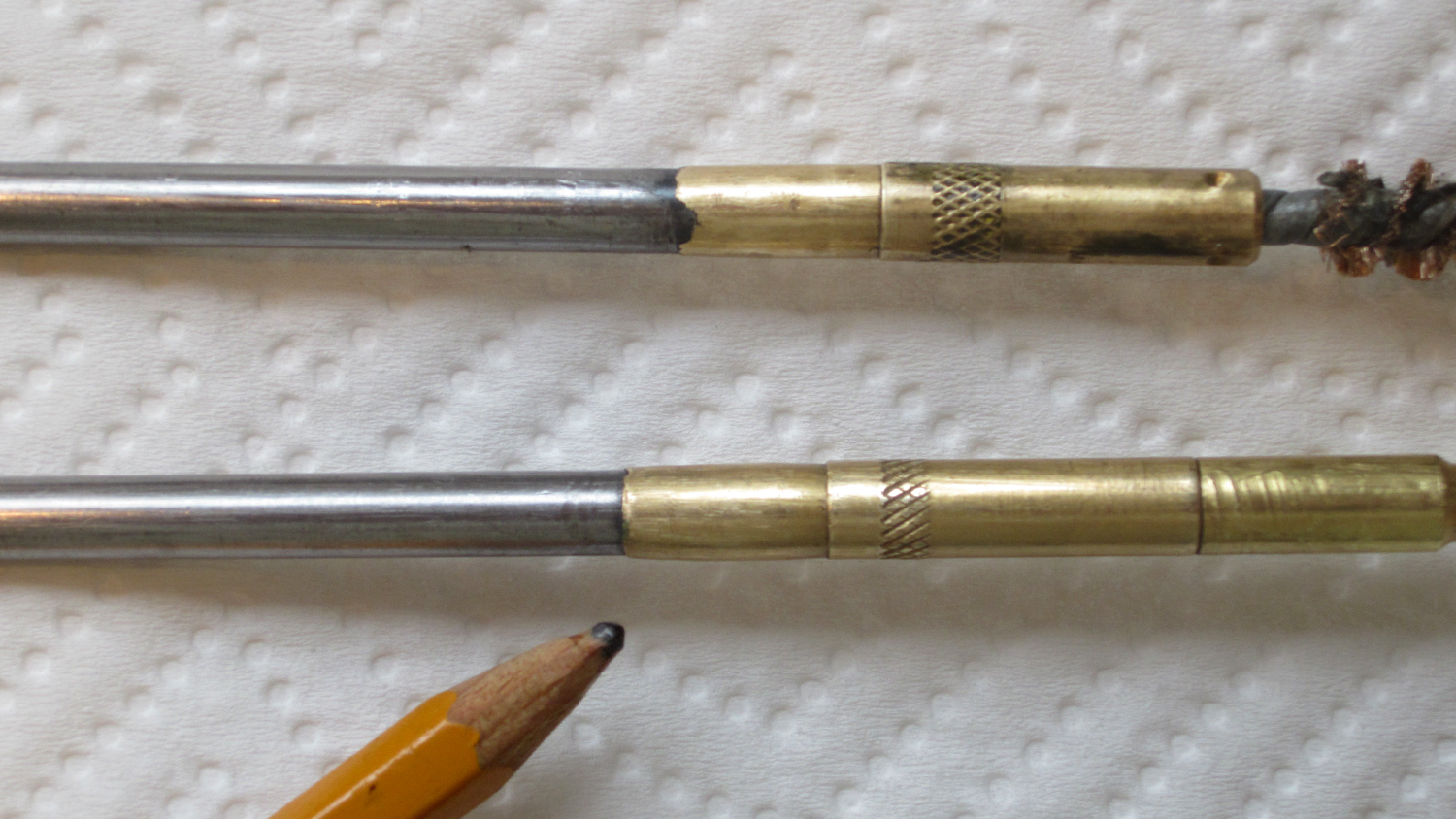
Above: The author prefers not to have Teflon on his cleaning rods so he cuts it off to create more distance from rod surface to the barrel. He carefully bevels the jag attachment points to prevent harmful contact with the rifle barrel or chamber should that happen.
Over the years probably the article most written is firearm care. About the only thing I can think of that may beat it for sheer volume is another 1911 article. But let's give this a try anyway.
If your rifle is a centerfire, you should get the bullet residue copper and carbon out of the barrel. This is especially true in higher humidity areas. Copper bullets apply a thin layer of copper to the bore. This copper plating will eventually react with airborne moisture (humidity) and the steel (especially carbon steel) and can create a tiny galvanic electric charge of sorts. Over time this chemical reaction will pit the bore. Even some high carbon stainless steel barrels need care in this area though not as much as carbon steel barrels, but why gamble? Don't shy away from carbon steel (blued barrels)—just take care of them, after all they have been in use from the time firearms were invented.

There are a ton of cleaners out in the market—use the one you have found that works best for you to remove carbon and/or lead fouling (generally the brushing does most of the work), and generally it is ammonia or something similar in cleaners that remove copper fouling when coupled with a good brushing.
Regardless of your choice, do *NOT* mix brands of cleaners—such as brand X with brand Y cleaner. This can create a barrel pitting acid—it has happened. Also, if you clean with brand X don't run a patch or brush load with brand Y—you may get the same acid result—that too has happened. Stick with one brand. If you want to switch, the time to do so is when the gun is fouled from firing and you can start off with a "dirty" barrel.
Top quality patches can make a difference and come on folks, regardless of price they are cheap. Think of them as adding water to the radiator of your car—cheap maintenance compared to an engine rebuild. Double napped patches are the top of the chart because they expose more cotton fibers to the bore and thus scrub it better—I prefer SEAL 1 brand due to this. I also like the old time rough and tough .30 caliber military patches from pre-1970s if I can find them.
And for mouse guns like the .17, hot .22s and even .22 rimfires a strip of paper towel wrapped around the cleaning jag rather than struggling with those tiny cleaning patches works very well once the bore is brushed. While here I will mention I prefer a wraparound cleaning rod jag over a penetrator jag and both over a slotted tip (they still work well). However the former two will deliver more patch to barrel bore contact, especially the wrap round jag.
More .22 rimfires and certainly 17s are ruined by cleaning than shooting. The reason is simple, the margin of "error" ratio between the center of the wound brush, cleaning rod tip (regardless of type), and the cleaning rod to the small bore size of these mouse calibers is really tight which makes it is easier to bend the brush and contact the bore or crown of the muzzle with the cleaning rod winding or jag metal which will harm a barrel.

When cleaning mouse gun calibers use extreme care in how you handle the cleaning rod and if you are using a brush—watch the center winding very carefully when inserting into the barrel whether chamber (best) or muzzle—don't bend it! Don't be cheap, replace the brush at the slightest bristle wear you observe. You do not want that bristle retention center winding touching the bore or chamber. Use high quality one piece cleaning rods, brushes, jags, and bore guides—again this is not the place to be cheap, mess up here and it you can run a rifle.
I prefer not to clean .22 rimfires (lead bullets) as I have found it is not necessary to do so for some time. I will clean a super accurate .22 about every thousand or two thousand rounds. You may do different but the danger to me is again, ruining a barrel with the cleaning equipment and not the soft bullet lead. Actually in the .22 rimfire factory lubricated lead bullets act as a barrel protectant to some degree so bore fouling over time is of far less concern to me than centerfire copper bullet bore cladding—you may find differently. Regardless, keep the bolt, chamber and rim area of the chamber clean (Q-tips work great).
How much cleaning solvent to use? Put too much on a patch and when you insert it in the chamber you will squeeze extra solvent out. That solvent may follow the action screw threads right into your stock and over time your bedding will have a thin film of cleaner between the stock and your rifle's action which will seriously affect accuracy.
Most if not all copper attacking solvents require air (oxygen) to work. There is nothing wrong with doing your normal cleaning routine and then running in an overnight solvent patch to dry patch out the next morning. If you do this expect to see green or blue copper residue on the patch. Do not ignore your trigger assembly if you can keep it properly maintained without tearing the gun apart.

The strongest cleaning rods are one piece rods which generally have a Teflon or plastic finish on them—keep that wiped free of contaminates. Less costly screw together cleaning rods have worked fine for many decades so if you use care not to bend them. There are some companies that also make robust screw together rods from solid brass and they are much stronger than the lower cost field type aluminum cleaning rods. For pure cleaning rod strength a quality one piece rod is best but one must consider its storage, however, to competitors, storage is the least of any worries what with all the gear we pack to matches. A bore guide of some type is a good idea for competition or more used (and cleaned) varmint rifles due to more frequent cleaning—for the average shooter or big game hunter, not so much of a need.
One key item I see violated all the time is failure to keep the locking lug contact points in the bolt assembly lubricated. Wear or galling between the bolt lugs and the action lock up points can hurt accuracy generally by increasing headspace over time. When I see folks working a dry bolt on a high power rifle or a .22 it gives me the willies like when some yahoo flips a revolver cylinder closed.
I use a lot of grease (not oil) on my gun's bolt locking lugs whether it is a high power or smallbore and my rifles have rewarded me with incredible accuracy for far longer than I deserve. I recommend this for everyday fun and hunting rifles. In extreme cold or dirt conditions then you are possibly forced into a thin coat of oil for these points of contact, but try not to shoot them when dry. The same goes for the bolt locking lugs and roller bearings on semi-autos too, keep them slick!
As you know, the first few shots out of a cleaned barrel may not shoot where the gun normally does. This is because the residual cleaner or oil lubricates the bore (at a microscopic level) and will send the bullet somewhere else for a few shots. Here is a nifty trick I and some others have kept secret for years. In high power silhouette competition I used to clean my rifles every 10 shots for accuracy and they easily delivered ½ MOA or less out to 500 meters and gave me incredible barrel life as a reward. But you cannot fire fouling shots in silhouette or most competitions during a match. What to do?
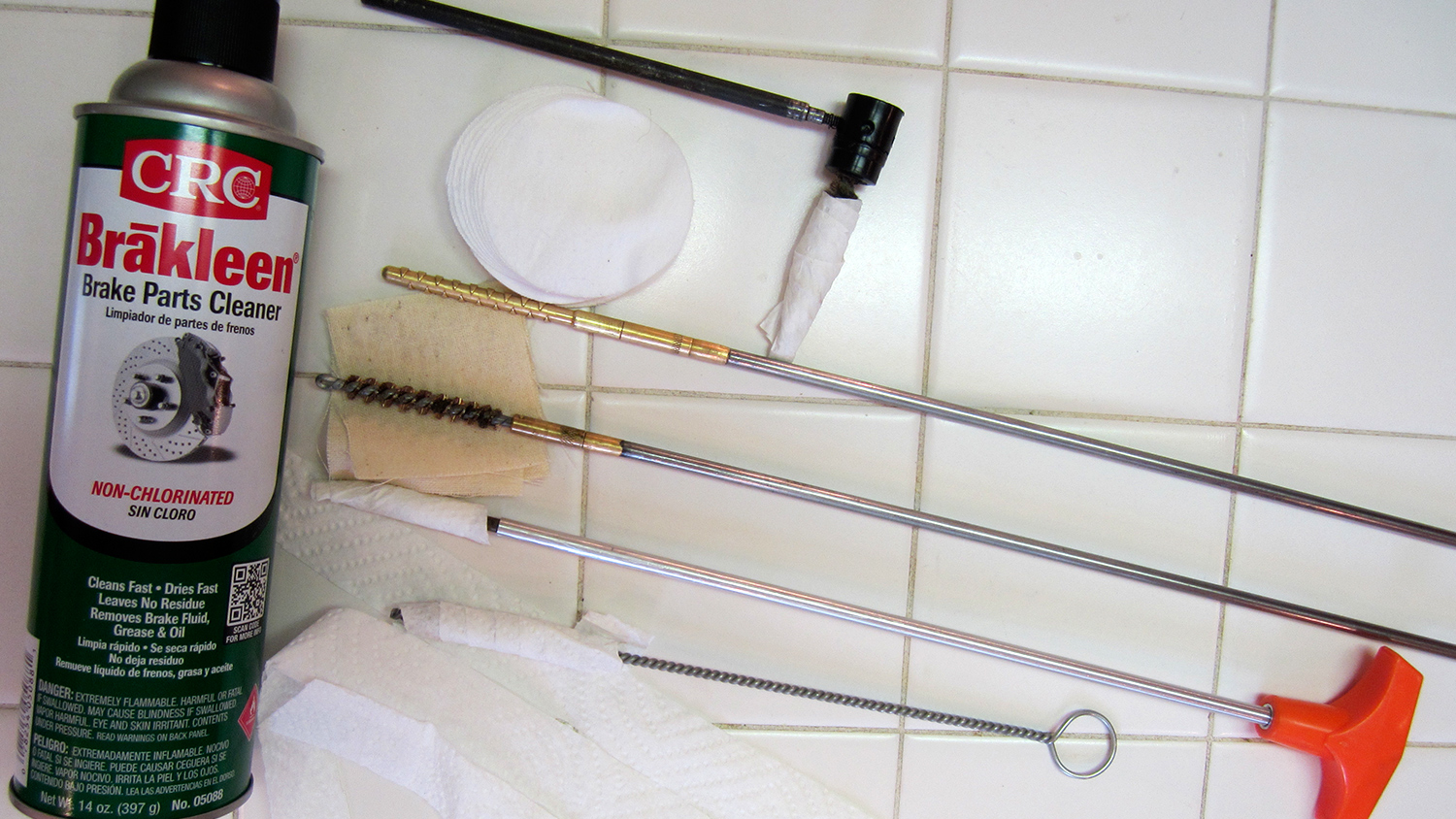
After cleaning and finishing up with a couple of dry patches I would then run a couple of patches wetted with spray brake and electric motor cleaner (not engine cleaner) through the barrel. I would then follow up with one dry patch and the bore was clean and bone dry in a few seconds and the next bullet would hit perfectly as if the gun had never been cleaned—no fouling shot necessary. You can get this stuff at most any auto parts store.
What goes on here? Even after 20 dry patches (who does that?) some cleaning solvent will remain in the bore. Brake and electric motor cleaner is specifically formulated to remove oil and contaminates. So when run through the bore it would instantly remove any remaining cleaning solvent or oil resulting in a clean and bone dry barrel that did not know it had ever been cleaned and would shoot the next shot exactly where it was supposed to. Of course prior to any extended storage of any firearm especially depending on if you are in a humid or dry environment a cleaning patch with oil will help preserve your rifle's bore and chamber and remember a patch or two with the brake and motor cleaner will give you a dry barrel almost instantly for that hunting or range trip.
Centerfire semi autos like the Garand, M1A, M1 Carbine, AKs, ARs, etc. require more detailing since they have more parts and pieces to maintain such as gas and carbon fouled parts but the basics here still apply with them. However, with most of these rifles the gas systems only need cleaning after a couple hundred (generally much more) rounds—but barrel and chamber maintenance, more often if and when you can.
Generally with rifles like the Garand and Springfield M1A I will clean with them with the rifle magazine side up to prevent solvent from going into the gas port via the gas escape hole in the barrel. When it comes time to clean my M1A gas system I will use a drill bit the same diameter as the hole in the gas plug to remove hard carbon by hand—*NOT* in a drill motor. Then a good wipe down of the gas piston, and cylinder surface with cleaner, a bit of oil on the plug threads and back it goes together; a five minute job. The AR takes more cleaning and since it can be torn to pieces without affecting the zero-do so and clean the heck out of it.
Proper barrel and chamber maintenance will add hundreds or even thousands of rounds of firing to the life of your firearm. So take your time, don't cheap out when it comes to cleaning products and don't get in a rush that will ruin a nice rifle. The bottom line with all of this boring and troublesome cleaning is first—just do it!













